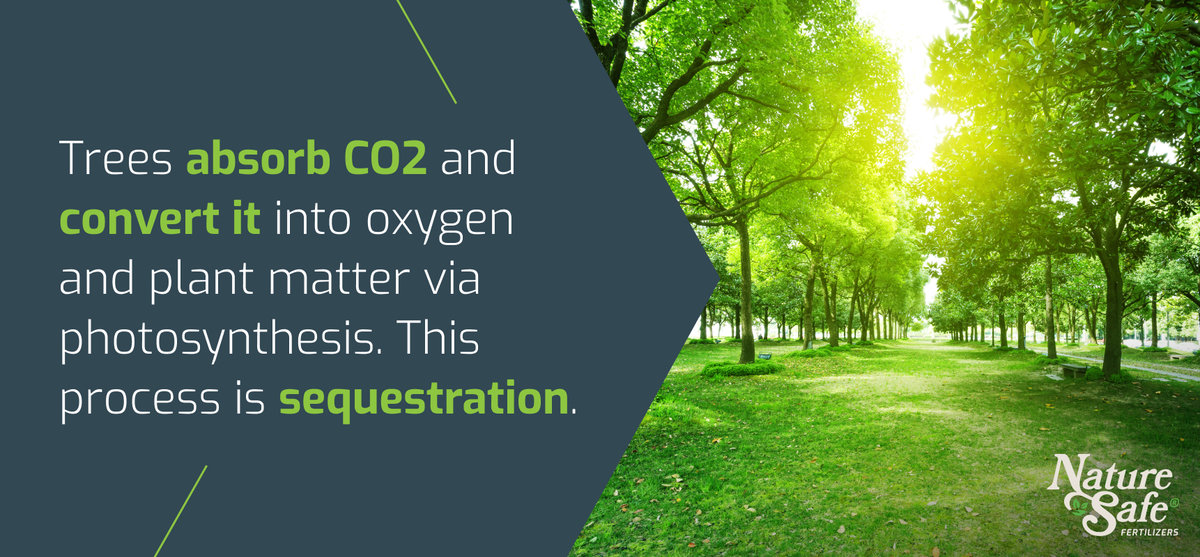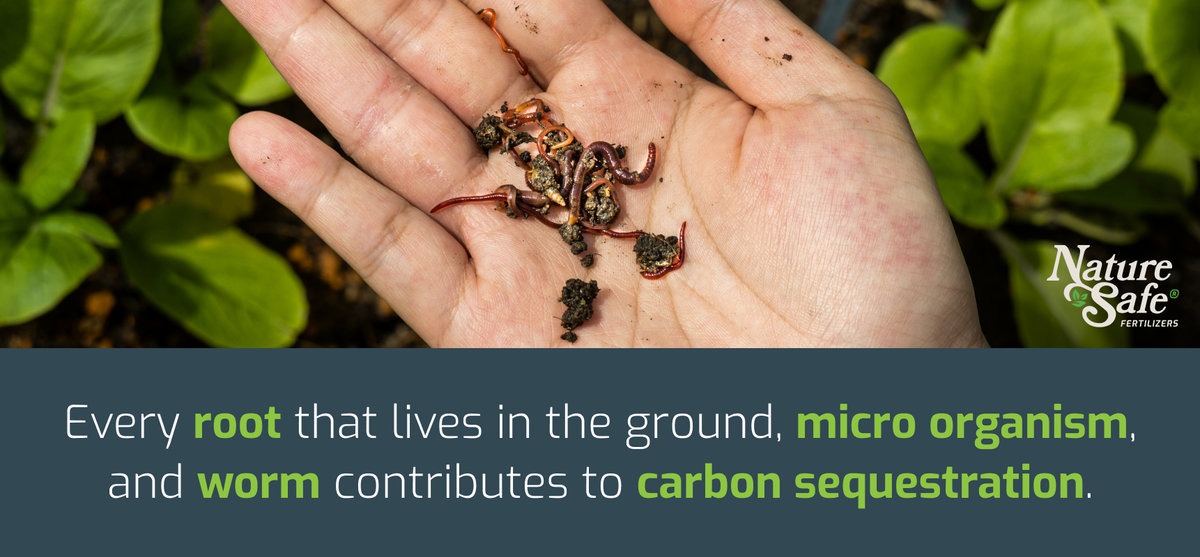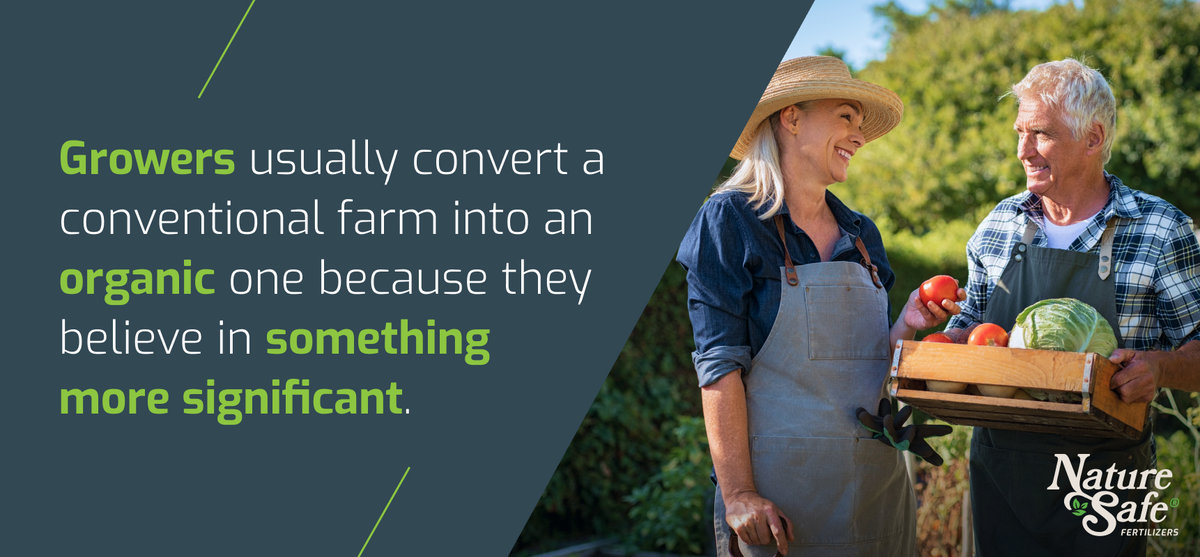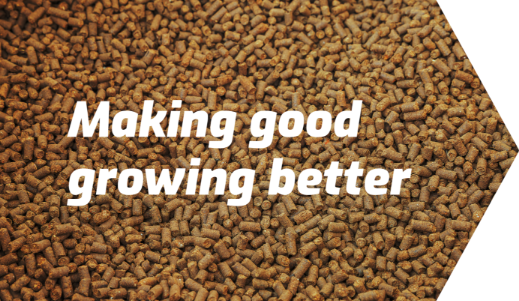
Carbon Sequestration:
What it Has to Do With You
- Posted: Dec 15, 2022
- Author: Nature Safe Fertilizers
- Environment
It’s no secret that regenerative organic agriculture helps your wallet, crops, and environment. You keep chemicals out of the water supply, and your yields are higher. But did you know that you’re also saving the world?
What is Sequestration?
Carbon sequestration removes carbon dioxide (CO2) from the atmosphere and stores it elsewhere. Your school teacher may have taught that trees absorb CO2 and convert it into oxygen and plant matter via photosynthesis. This process is sequestration.
All plants, from conifer trees to seaweed to pole beans, absorb CO2. Eventually, they split the CO2 into elemental carbon and oxygen, which they use for further growth. Though the process isn’t immediate, both living and decaying plant matter are very efficient at holding the CO2 before converting it into other valuable elements.

Why Do We Need to Sequester Carbon?
Carbon sequestration is a wildly important part of creating a sustainable future.
CO2 is a greenhouse gas created by fossil fuels, decomposing organisms, and many manufacturing practices. It is a significant contributor to climate change. The CO2 produced by decomposing organisms and living organism respiration can typically be absorbed in the same rate by photosynthesizing plants.
However, extra CO2 from human practices and degraded soil means the cycle becomes uneven, and the plants can’t use the CO2 quickly enough. Too much CO2 leads to excess greenhouse gasses in the atmosphere, contributing to climate change.
Carbon sequestration is one way to combat it. Every grower can make a difference by actively removing carbon from the atmosphere and upcycling it. The better we can grow, the longer we can do it, and the more significant the positive impact we’ll have on the planet.
Where is Carbon Stored?
When any plant, large or small, absorbs the CO2, it stores it until it can photosynthesize and break down the CO2.
Naturally, CO2 is released back into the atmosphere from decay and disturbance. But many macro ecosystems absorb more carbon than they release due to their sweeping biodiversity.
Anything that absorbs more carbon than it releases into the atmosphere is called a carbon sink. Forests are one of the most efficient carbon sinks due to the size and number of photosynthesizing organic matter. Trees hold carbon, but so do all plants, alive or dead. According to Client Earth, forests sequester 2.6 billion tons of carbon yearly.
Oceans comprise over 70% of the globe and are responsible for 31% carbon sequestration. Similar to how soil is full of microorganisms, so is the sea. These organisms, called phytoplankton, are responsible for most carbon storage and conversion.
Soil as a Carbon Sink
Our favorite carbon sink is soil. Every root that lives in the ground, microorganism, and worm contributes to carbon sequestration. Soil organic matter (such as buried plant matter and organisms) and inorganic matter (like vitamins, minerals, and humus) store carbon.
Agricultural lands can either help or hinder the effort to increase soil carbon. Conventional practices like heavy tilling can reverse sequestration and release CO2 into the atmosphere.
With regenerative practices and organic farming, MIT estimates that soil can sequester up to one billion tons of carbon yearly.

What Does Carbon Sequestration Mean to Me?
It might not be one of many things on your mind when you plant your cash crops. After all, you likely have much more to think about than the carbon cycle. However, putting carbon in the soil is one of the most important things you can do at any scale.
Soil Microorganisms Need the Carbon
We’ve mentioned carbon sequestration a few times before because of its interconnection to the development and maintenance of healthy soil.
Cornell University Cooperative Extension found that carbon in the soil not only improves soil structure (which impacts water retention, nutrient movement, and oxygen levels) but also improves the productivity of soil organisms.
You Probably Already Use Practices That Sequester Carbon
All plants use photosynthesis to absorb CO2—from turf grass to barley fields. CO2 absorption is one of the reasons that agronomists encourage having as much organic matter in the soil as possible, particularly root systems. Recommended practices include green manuring and cover cropping.
Regenerative agriculture involves no-till or low-till practices. Not only does conventional tilling disturb complex soil structures that disrupt the ecosystem dwelling beneath the surface, but it also releases sequestered carbon back into the atmosphere.
Why Did You Get Into Organic Agriculture?
Organic products are gaining incredible popularity, and that trend isn’t slowing down anytime soon. The reality of the planet’s future is inching closer, and consumers and growers recognize a need to change how we treat our resources.
Converting a conventional farm into an organic one takes time and resources, but growers usually do it because they believe in something more significant. Even if your goal is to provide safe and organic produce to your local community, that impact reaches well beyond.

Carbon and Organic Fertilizer
Carbon causes soil to be healthier, but healthy soil absorbs more carbon. We understand if this feels like a chicken-and-the-egg conundrum, but it’s easy for growers to start that cycle by creating healthy soil.
Organic fertilizers aim to improve soils rather than only increase crop growth. Once the soil organisms are well-fed, the soil structure, organic matter, and size and yield of crops themselves will improve.
Talk to Nature Safe Today
The ingredients of organic matter also make a difference. Nature Safe’s 8-5-5 pelleted organic fertilizer is made of meat and bone meal, feather meal, blood meal, and sulfate of potash. These ingredients of organic origin provide beyond nitrogen, phosphorus, and potassium. They also contain some level of carbon.
This nutrient formula, and every Nature Safe product, is designed to provide all of the nutrients necessary for fertile soil and to stimulate all soil life—including carbon.
When you improve soil health, you save the world. Whatever your motivation to choose organic fertilizer, we’ll ensure you get what you need. Call us today to make good growing better.
